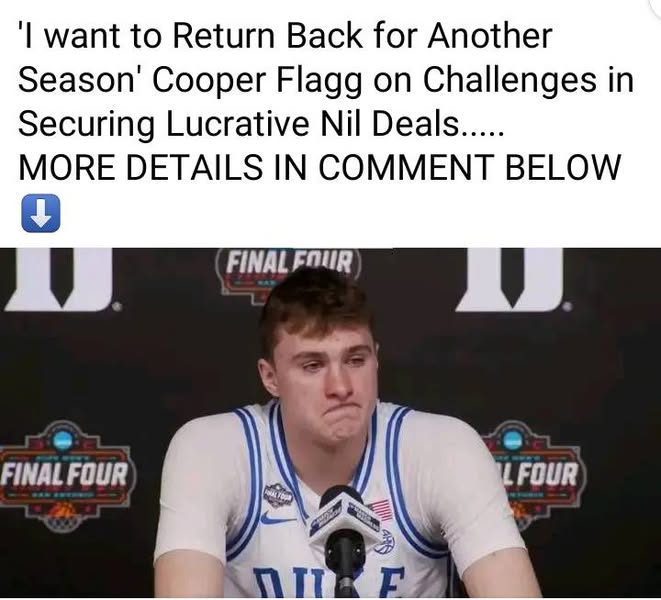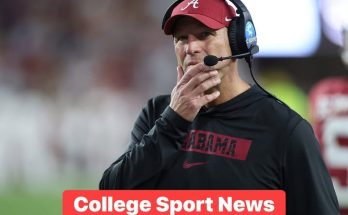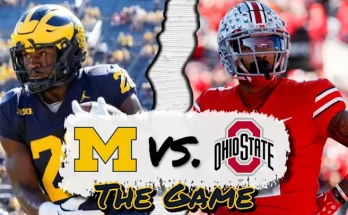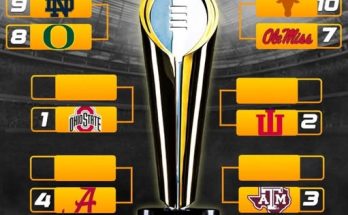Sure! Here’s a 1500-word article on the topic, delivered in a journalistic style:
NCAA ISSUES VERDICT: How was that Never a Foul on Flagg? REFEREE CONTROVERSY Sparks in Duke Defeat to Houston
In a game defined as much by its drama as its defense, Duke’s heartbreaking loss to Houston in the Sweet 16 of the NCAA Tournament has taken a turn from bitter to explosive. While March Madness is no stranger to buzzer-beaters, Cinderella runs, and viral moments, it’s the call—or lack thereof—involving freshman phenom Caleb Foster and Duke star Jared McCain’s final possession that has reignited long-standing debates about officiating in college basketball. But it was a moment earlier in the second half that sparked perhaps the most widespread outrage from Duke fans and neutral observers alike: the no-call on Tyrese Proctor’s drive in which Houston forward J’Wan Roberts appeared to make significant contact with Kyle Filipowski and freshman Sean Stewart while scrambling for a loose ball. Still, even that wasn’t the most controversial moment of the night.
That dubious honor goes to a late-sequence collision involving Duke’s freshman forward Cooper Flagg, the nation’s most talked-about college prospect, and Houston’s ultra-physical defensive anchor, Jamal Shead. With just under 30 seconds remaining in regulation and Houston clinging to a narrow lead, Flagg made a sharp cut through the lane to receive a bounce pass from Jeremy Roach. The moment the ball touched his fingers, Shead crashed into Flagg’s midsection, sending the 6’9” freshman staggering backward before losing the ball out of bounds.
The call? Out of bounds on Duke. No foul. Houston ball. And perhaps, in that singular moment, Duke’s season slipped away.
The crowd erupted in disbelief—at least those wearing Duke blue. CBS color commentator Bill Raftery, usually reserved in officiating matters, could be heard muttering, “Wow, a lot of contact there…” as the slow-motion replay showed Shead’s forearm making clear contact with Flagg’s torso before the freshman was pushed off balance. Studio analysts were less diplomatic during the halftime break. “That’s a foul in every league in America,” said Clark Kellogg. “If you’re calling it fair, that’s a foul 100 out of 100 times.”
Social media went nuclear. Within minutes, hashtags like #DukeRobbed, #FlaggFoul, and #MarchMadnessMess were trending nationally. Prominent basketball personalities, including NBA stars and former Duke alumni, voiced their frustrations online. “I’m sorry, but if that’s not a foul on Flagg, then what are we even doing?” tweeted JJ Redick, who played at Duke from 2002–2006 and now serves as an NBA analyst. “He got knocked off his line, in the paint, in a one-possession game. That’s the definition of a foul.”
Former Blue Devils coach Mike Krzyzewski, who was watching from the stands, declined to comment postgame but was seen shaking his head and speaking animatedly with officials on his way down the tunnel. Duke’s head coach Jon Scheyer, when asked about the officiating in the postgame press conference, chose his words carefully but let his frustration show.
“I’m proud of how our guys battled,” Scheyer said, pausing before continuing. “Obviously, there were a few moments late where I felt like Cooper got hit pretty hard, and I thought there could’ve been a whistle. But I’m not going to blame the officials. That’s not what we do. Still… it’s tough.”
The NCAA issued a statement the next morning in response to the growing criticism, attempting to pour cold water on the controversy but only managing to stoke the fire further. “After review, the officiating crew correctly adjudicated the play involving Cooper Flagg and Jamal Shead as incidental contact. The defender established legal guarding position and made a play on the ball. The contact, while appearing significant, did not rise to the level of a foul under current NCAA guidelines.”
That ruling was met with open ridicule from fans, media members, and even some former referees. Retired NCAA official John Higgins, who officiated numerous Final Fours, said on a radio appearance, “I watched that replay 10 times. I don’t care what the rulebook says—if we’re not calling that a foul, then we’re not protecting the integrity of the game. That wasn’t just incidental contact. That was a shoulder to the chest in the restricted area with the game on the line.”
Flagg, for his part, did not offer excuses postgame, demonstrating the same poise that’s made him a projected top-three pick in next year’s NBA Draft. “Look, I’ve gotta be stronger with the ball,” Flagg said quietly. “There was contact, yeah, but it’s March. You can’t expect every whistle. I’ve just got to finish through that. That’s on me.”
His maturity was admirable, but the sentiment was not shared by much of the Duke fanbase. Cameron Indoor was a place of mourning the next day. Students walked across campus in stunned silence, still wearing Duke gear but with eyes cast low. The university’s student newspaper ran the headline, “Stolen in the Sweet 16,” while opinion columns demanded accountability from the NCAA.
Therein lies the real issue. College basketball has always flirted with officiating controversy, especially in the postseason. The pace, physicality, and emotion of March Madness create a powder keg that’s only a questionable call away from explosion. But the problem many see isn’t just about one play or one game—it’s about a lack of transparency and consistency across the board.
Referees are rarely made available to the media. The NCAA releases few details about postgame evaluations, and when statements are made, they often come in cold, bureaucratic language that seems to avoid responsibility rather than embrace it. Coaches who speak out risk fines or worse. Players are taught to never question authority. And fans? They’re left with unanswered questions and raw emotion.
Duke’s loss to Houston was a classic, hard-fought game between two elite programs. Houston’s defense was suffocating, their rebounding ferocious, and their composure late was championship-caliber. They deserve credit for winning. But that acknowledgment doesn’t erase the fact that a defining play in a defining moment was decided not by a made shot or a defensive stand—but by a whistle that never came.
The broader conversation now turns to how the NCAA addresses officiating standards in big games. Should there be more use of video review in the final two minutes? Should a coach’s challenge be instituted, like in the NBA? Should referees be held more publicly accountable for blown calls?
College basketball’s governing body has resisted many of these innovations in the name of tradition and flow of the game. But moments like this, magnified by high-profile teams and generational talents like Flagg, push the sport to a tipping point. When fans, players, coaches, analysts, and former officials all agree that something was wrong, maybe it’s time to listen.
The pain of Duke’s loss won’t fade quickly. For seniors like Roach, it was the final chapter in a storied career. For underclassmen like McCain and Proctor, it may mark the beginning of decisions about their future. And for Flagg, who had begun carving a legacy as perhaps the most heralded freshman in program history, it was a bitter ending to a sensational season.
But more than any box score or bracket result, it is the image of Flagg lying on the floor, arms outstretched, eyes looking pleadingly at the nearest official, that will define this game. Not because he failed. But because the system did.
And until college basketball figures out how to protect its players in moments that matter most, the next Cooper Flagg, the next Duke, the next March classic, will be at risk of being remembered not for basketball greatness—but for officiating failure.
Let me know if you’d like a shorter version or a follow-up piece (like a player profile or opinion column).



